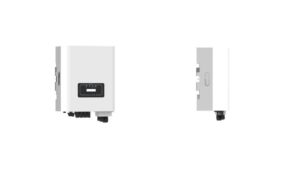Many people are often annoyed by the damp on the wall. If the wall gets damp, it will cause damage to the wall. Long-term living in such an environment will also have a very bad effect on our health. Therefore, we should do a good job. Moisture-proof work on the wall.
What should I do if the wall is damp and moldy
If you find that the wall has already produced mild mold due to dampness, you can take the following steps to remove the mold.
Use mildew killer, 84 disinfectant or bleaching solution (diluted to 5-10%) to wipe the painted walls, and quickly wipe off the mold spots. The method is to use a rag to easily wring out and then wipe it or use a small watering can to atomize and spray. Leave it for 24 hours and wipe it with clean water. You must use a clean cloth dipped in clean water and wring dry and wipe it. If the mold is serious, you can wipe it with one more solution.
In order to avoid mildew again, care should be taken to dry the wall thoroughly. If the wall has recurring mold or mildew is very serious and cannot be removed by the aforementioned methods, then a good solution is to shovel the original wall and repaint the primer and topcoat. The re-purchased paint needs to ensure that its anti-mildew performance is superior.
How to prevent the wall from getting damp
1. Close the window sooner or later to minimize the entry of moisture. Humid weather is a serious hazard to the wall. First of all, we must prevent humid air from entering the room. When the rainy season or rainy days come back to Nantian, please remember to close the windows of your home tightly. Especially the windows facing south and southeast do not give the humid air a chance to sneak into the room. The windows are closed every morning and evening. The air humidity during these two periods is higher than that at noon. If the windows are not closed in time, water vapor in the air will take the opportunity to enter the room. It is advisable to open the window at noon for a short time.
2. Use desiccant and other products to absorb moisture. You can buy some desiccant, moisture absorption box and other supplies, reasonable use can reduce the humidity in the home to a certain extent. In addition, you can also use lime, washing powder, etc. to make your own moisture absorption box.
3. Use a dehumidifier. If you want to be lazy, you can use dehumidification appliances to help. You can use this function to dehumidify when the humidity is heavy; you can buy a professional dehumidifier on the market, and the dehumidification effect is very good.
4. Check and remove water vapor on the wall in time. During wet weather, check the humidity of the walls in your home regularly. If you find that there is already condensation on the wall, you need to take timely countermeasures. Dry rags, dehumidifiers, etc. can be used to absorb moisture on the wall.
Due to various reasons, the walls of many people’s homes are damp. This problem is very distressing. Therefore, it is very useful to learn some methods to prevent the walls from getting damp. Of course, if you have a dehumidifier at home, when you feel that the air is relatively humid, turn on the dehumidifier to remove the excess moisture in the air and you will no longer have to worry about your walls getting damp.










